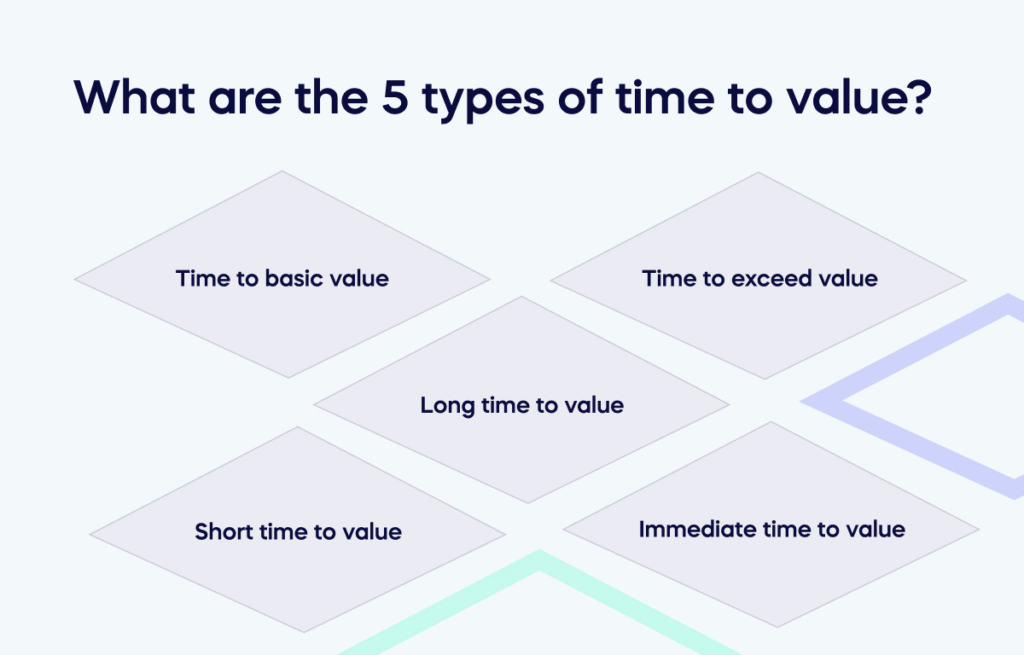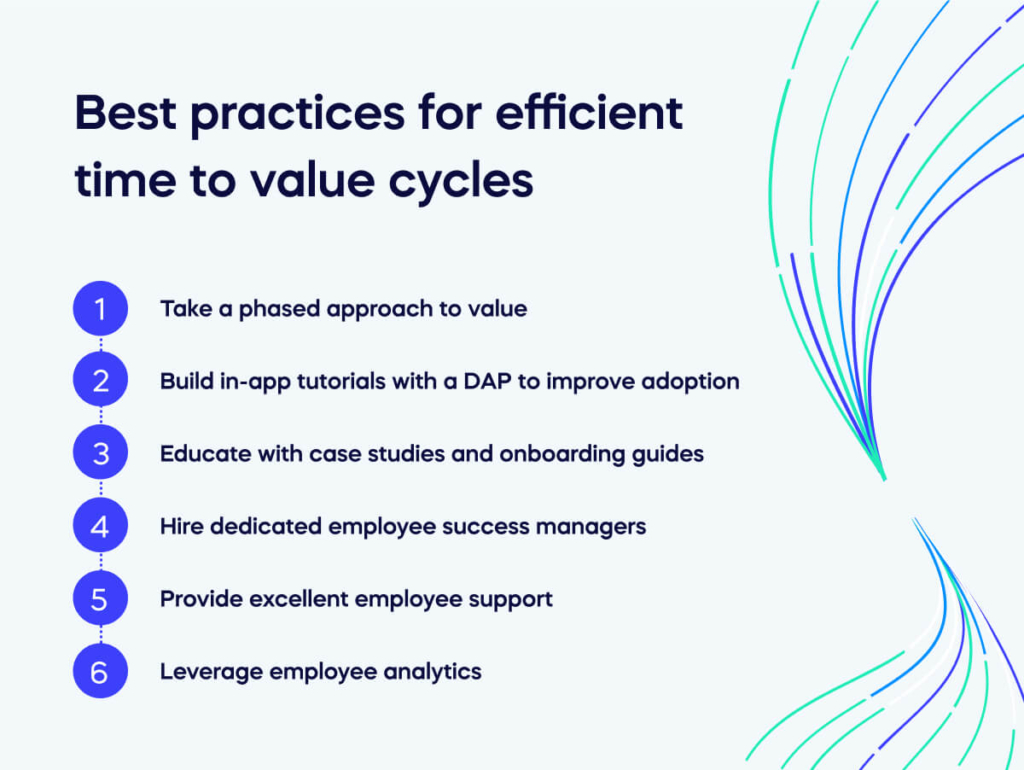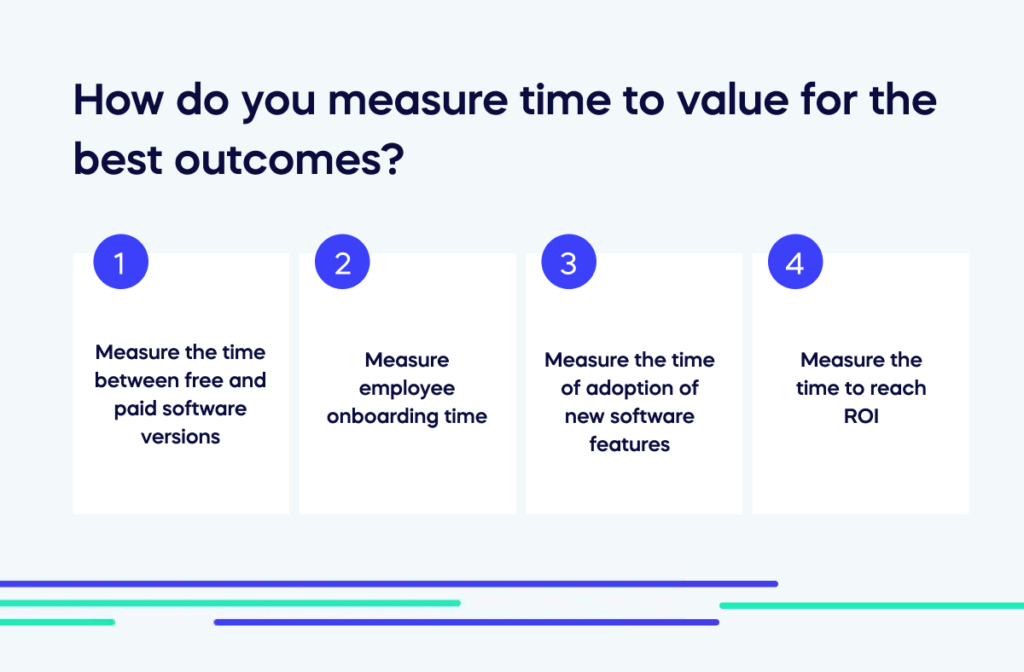We often see concepts underutilized in business, and time to value (TTV) is a great example.
The time to value of a product is how long a user takes to see its value, usually focusing on the customer journey.
But TTV is underutilized because business blogs typically apply it to customer experience, and organizations have never used it to enterprise employees within a digital adoption.
Consider the potential of measuring how quickly you can achieve ROI on new technology as you track your employee adoption rates of new technology.
And with Statista predicting that global digital transformation spending will reach USD 3.4 trillion by 2026, now is the best time to ensure high adoption for efficient ROI on all investments.
To help you understand the potential of applying time to value to your employees within a digital adoption project instead of customers, we will explore the following topics:
- What is time to value (TTV) in 2023?
- What are the types of time to value?
- How do you measure time to value for the best outcomes?
- Best practices for efficient time to value cycles
What is time to value (TTV)?
Organizations measure the time it takes for new customers to derive value from a product or service using the time to value metric. New users anticipate efficiently receiving the worth of what they paid for, ideally as quickly as possible.
Companies traditionally apply time to value to customers, but we will explore an innovative way to use it for employees to promote adoption rates for new technologies.
Time to value vs. ROI
TTV sounds very similar to ROI, but the truth is that they measure different resources with the same intention of being efficient and profitable. View it as TTV being the road you travel to arrive at ROI.
You measure the time it takes to get to your TTV, which is like the duration of the time taken to travel along the road until you arrive at their destination: the ROI, which also results in the ROI for your company as more customers purchase your product.
Although organizations usually use TTV to measure customer adoption rates for new products, you can also use it as a measure for a digital adoption project to calculate how soon your staff will adopt a new technology.
The principle is the same, with TTV being the road of digital adoption that your staff travels to arrive at their destination of company-wide adoption of a new technology, wherein your company achieved the ROI.
What are the 5 types of time to value?

Knowing the five types of time to value helps you to see which metric to utilize in any situation and improve on the initial value realization you intend to achieve.
Time to basic value
Time to basic value, also known as basic value time or initial value time, measures the shortest possible time for an employee to feel confident about their choice.
This metric shows that they’ve only experienced the basic benefits of the product/service and haven’t fully utilized it yet.
Time to exceed value
This metric measures a product or service’s duration to surpass users’ expectations and persuade them to continue using it. It could occur when a user’s requirements exceed that of a basic plan, resulting in an upgrade to more advanced features.
Focusing on exceeding value within a specific time frame increases customer lifetime value for a brand, which works similarly for employees.
By consistently surpassing expectations, employees will feel more inclined to use software from specific vendors, optimizing adoption rates when they use these new technologies.
Long time to value
It is typical for certain products and services to take some time before their value becomes apparent. Software-as-a-service (SaaS) solutions may require several weeks or even months to integrate systems and data across various business departments fully.
Suppose the product or service you provide takes longer for users to see the returns. In that case, it’s crucial to keep showing them its value throughout the process through champions who have demonstrated enthusiasm for new technology and can promote it to other staff.
Short time to value
Measuring short time to value is easier because businesses can reach out with a specific need and have it immediately met.
Having a product or service with a short or immediate time to value can be unhelpful as users tend to have less patience and loyalty. The more streamlined a solution the brand offers quicker, customers often switch to that brand.
Immediate time to value
Some services offer instant rewards for customer actions, called “immediate time to value.”
whether your solution is meeting the standards of your employees for adopting new technology.
In such cases, employee satisfaction, like customer satisfaction, could be the most effective measure to evaluate whether a new technology delivers value promptly.
Best practices for efficient time to value cycles

Reducing the time to deliver value is crucial in preventing customer loss. Here are six ways to shorten your time to value for employee adoption of new digital tools.
Take a phased approach to value
Introducing all a new product’s features to new clients at once is unnecessary. Sometimes, developers try to offer too much at once, causing users to feel overwhelmed as they haven’t yet learned the original features.
Conventionally, measuring TTV means that rushed features can negatively impact customer retention rates, but using it to measure employee digital adoption rates can also affect employees using new software.
As a result, new features can lead to staff using legacy systems, undoing your digital transformation investments.
Create a guide for a phased implementation of solutions to improve employee understanding of a new platform.
Build in-app tutorials with a DAP to improve adoption
To help your users utilize new tech more effectively, consider offering in-app tutorials that cover basic and advanced features. Keep the tutorials short, accessible within the app, and easy to follow.
A DAP is the best way to achieve this, as it includes in-app guidance, with tutorials as standard, and has personalization features to tailor learning content to each user, allowing them to learn as they work.
Educate with case studies and onboarding guides
To help your team use a new solution effectively, offer them onboarding guides and detailed case studies.
These resources will teach them how to utilize a product’s features, including the small details they may not discover if they learn how to use the software independently.
Hire dedicated employee success managers
An employee success manager is similar to a customer success manager and can assist employees who need support using new technology.
They can answer questions, assist onboarding, and resolve issues or challenges. This personal assistance or training can significantly improve your staff’s experience with your product and result in a shorter TTV.
Provide excellent employee support
Having reliable employee support when using the software is essential, as it ensures that employees have access to assistance when encountering problems and allows for accessible communication with the employee support team.
Prompt and practical support can facilitate the adoption of the software and help resolve issues such as onboarding or software updates as they arise.
Leverage employee analytics
To improve the effectiveness of your product, pay close attention to how employees use it and identify any barriers that may prevent them from fully adopting your solution. By understanding your employees, you can tailor your answers to suit their needs better and boost adoption rates.
Revolutionize your approach to time to value by applying it to staff
Achieving maximum value out of a business venture is critical to a successful journey. With careful time management and planning, businesses can shift their approach to leverage time to maximize returns.
Taking advantage of this concept by applying time to value can revolutionize the performance elements and unlock potential you may never have known existed. Using this concept in your organization can begin the revolution today.
It is categorized as immediate TTV if you use a website providing a link and get an immediate service such as picture resizing, search engine optimization, filters, or link shortening.
How do you measure time to value for the best outcomes?

There are many ways to measure time to value for the best outcomes. The first is to measure straight from the trial period of the new software.
Measure the time between free and paid software versions
If you are trialing a free version of a new software solution across your organization, focus on tracking the duration it takes for your organization to decide, based on employee analytics, about upgrading to the paid version.
Trials allow you to assess the potential value of new technology, carefully decide about investing in expanded features and offerings, and become a good metric for adoption rates for the best new tools with the best user experience.
Measure employee onboarding time
What is the timeline for training staff to use a new software solution throughout your organization after your investment?
If it takes too long to train employees, avoid investing in that technology because it causes unnecessary downtime and delays throughout the organization with a protracted user onboarding process.
A speedy onboarding process, however, means you should opt for that solution by enabling you to use new technologies more quickly.
Measure the time of adoption of new software features
When vendors release new features, what is the typical time for employees to use them?
If employees are slow to adopt the new features, it might signal that they are not in demand or that unnecessary barriers prevent customers from using them.
Measure the time to reach ROI
How long does it usually take for employees to achieve your organization’s desired return on investment after using a new solution?
You can measure the timeframe companies typically use for customers in actual business growth for marketing solution users or by the frequency of product use in an office setting for your employees.
However, note that these measures primarily apply to enterprise SaaS instead of bespoke solutions.
In the same way, companies achieve customer adoption with tailor-made solutions based on their distinct needs and requirements. You might require alternative metrics to assess


